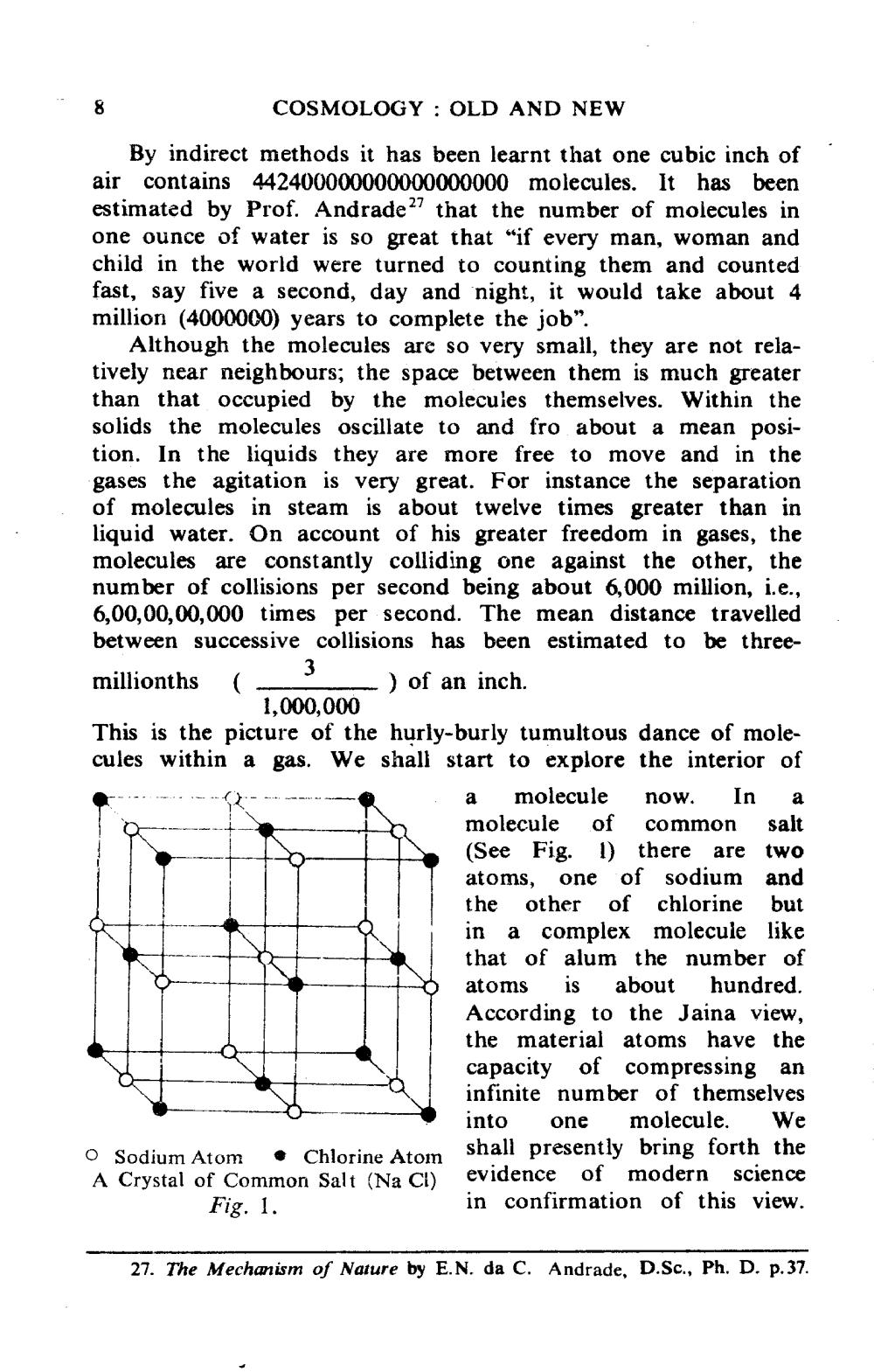________________
COSMOLOGY : OLD AND NEW
By indirect methods it has been learnt that one cubic inch of air contains 442400000000000000000 molecules. It has been estimated by Prof. Andrade 27 that the number of molecules in one ounce of water is so great that “if every man, woman and child in the world were turned to counting them and counted fast, say five a second, day and night, it would take about 4 million (4000000) years to complete the job".
Although the molecules are so very small, they are not relatively near neighbours; the space between them is much greater than that occupied by the molecules themselves. Within the solids the molecules oscillate to and fro about a mean position. In the liquids they are more free to move and in the gases the agitation is very great. For instance the separation of molecules in steam is about twelve times greater than in liquid water. On account of his greater freedom in gases, the molecules are constantly colliding one against the other, the number of collisions per second being about 6,000 million, i.e., 6,00,00,00,000 times per second. The mean distance travelled between successive collisions has been estimated to be threemillionths ( L ) of an inch.
1.000.000 This is the picture of the hurly-burly tumultous dance of molecules within a gas. We shall start to explore the interior of
a molecule now. In a molecule of common salt (See Fig. 1) there are two atoms, one of sodium and the other of chlorine but in a complex molecule like that of alum the number of atoms is about hundred. According to the Jaina view, the material atoms have the capacity of compressing an infinite number of themselves
into one molecule. We O Sodium Atom • Chlorine Atom
shall presently bring forth the A Crystal of Common Salt (Na Cl) evidence of modern science Fig. 1.
in confirmation of this view.
27. The Mechanism of Nature by E.N. da C. Andrade, D.Sc., Ph. D. p. 37.




